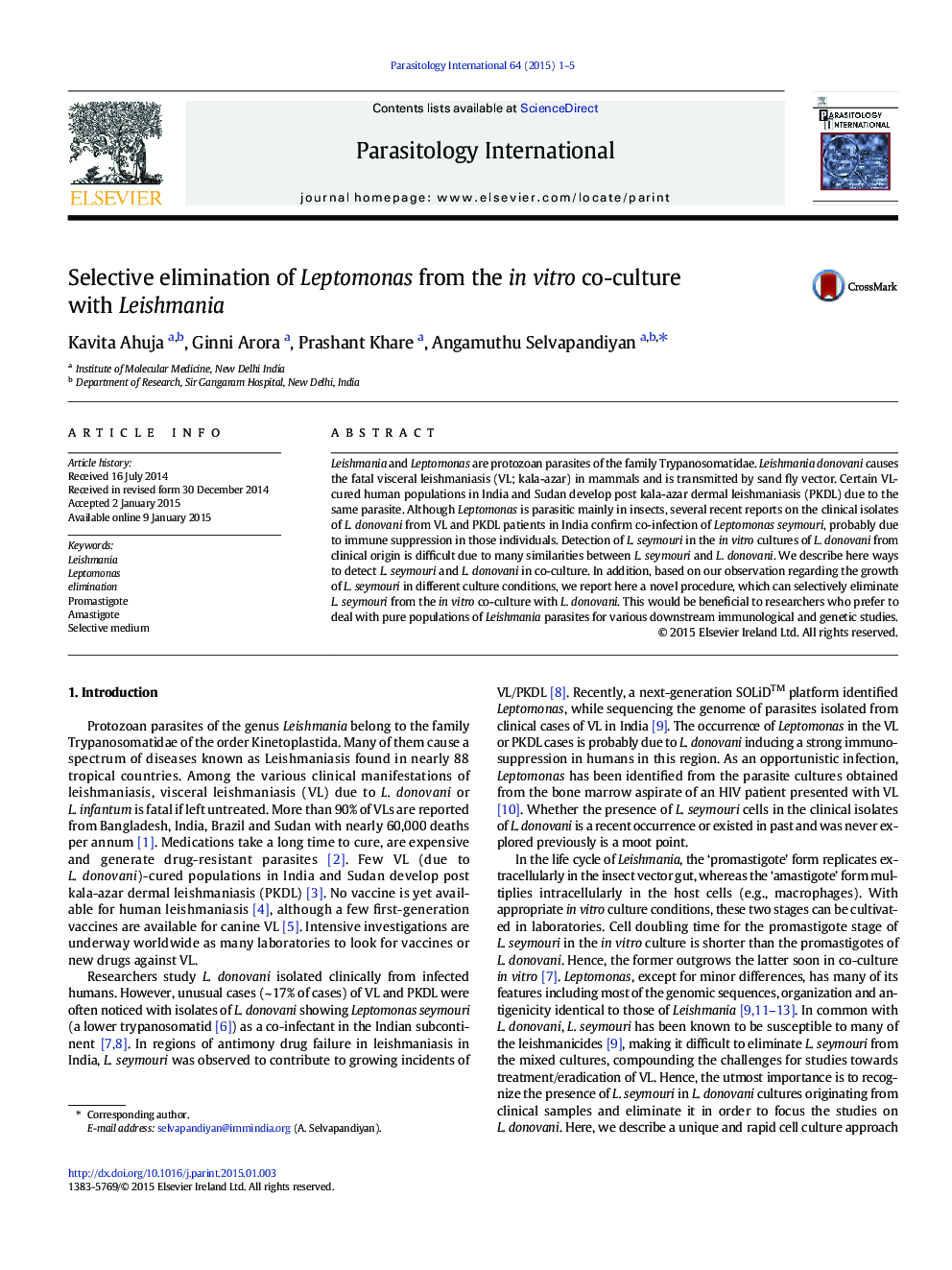| Article ID | Journal | Published Year | Pages | File Type |
|---|---|---|---|---|
| 3417840 | Parasitology International | 2015 | 5 Pages |
•Leptomonas parasites move 3.4 times faster than Leishmania in culture in vitro.•Leptomonas does not grow in Leishmania culture conditions at 37 °C.•Leptomonas can thus be selectively eliminated from Leishmania in mixed culture.
Leishmania and Leptomonas are protozoan parasites of the family Trypanosomatidae. Leishmania donovani causes the fatal visceral leishmaniasis (VL; kala-azar) in mammals and is transmitted by sand fly vector. Certain VL-cured human populations in India and Sudan develop post kala-azar dermal leishmaniasis (PKDL) due to the same parasite. Although Leptomonas is parasitic mainly in insects, several recent reports on the clinical isolates of L. donovani from VL and PKDL patients in India confirm co-infection of Leptomonas seymouri, probably due to immune suppression in those individuals. Detection of L. seymouri in the in vitro cultures of L. donovani from clinical origin is difficult due to many similarities between L. seymouri and L. donovani. We describe here ways to detect L. seymouri and L. donovani in co-culture. In addition, based on our observation regarding the growth of L. seymouri in different culture conditions, we report here a novel procedure, which can selectively eliminate L. seymouri from the in vitro co-culture with L. donovani. This would be beneficial to researchers who prefer to deal with pure populations of Leishmania parasites for various downstream immunological and genetic studies.
Graphical abstractElimination of Leptomonas from mixed in vitro culture with Leishmania. M: marker; Lep: Leptomonas; Lei: LeishmaniaFigure optionsDownload full-size imageDownload as PowerPoint slide
